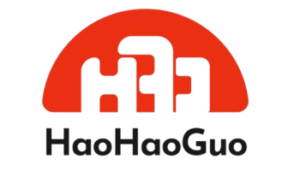If you’re planning to live, work, or invest in Singapore, understanding public housing is essential. One of the most unique and well-structured public housing systems in the world is the HDB in Singapore. Managed by the Housing & Development Board, this system has shaped the nation’s housing landscape for decades.
Whether you’re a local resident, a permanent resident, or a foreigner hoping to understand how housing works here, here are 10 things you need to know about HDB in Singapore.
What Is HDB in Singapore?
HDB in Singapore refers to public housing developed and managed by the Housing & Development Board. Over 80% of Singapore’s population live in HDB flats, making them a key part of the country’s residential infrastructure.
Types of HDB Flats
There are several types of HDB in Singapore, from 2-room Flexi units to executive flats. The layout and size differ based on family needs and budget. Popular types include:
- 3-room (for smaller families)
- 4-room and 5-room (ideal for growing families)
- Executive flats (the largest, with extra space)
Eligibility to Buy HDB in Singapore
Not everyone can buy HDB in Singapore. Citizens can buy both new and resale HDB flats. Permanent Residents (PRs) can only purchase resale flats, and foreigners are generally not allowed to buy unless under special schemes.
Buying New vs Resale HDB Flats
You can either buy a new flat directly from HDB through a Build-to-Order (BTO) or Sale of Balance Flats (SBF) exercise, or buy a resale flat on the open market. New flats are subsidized and take longer to obtain, while resale flats offer immediate occupancy but come at a higher price.
Grants for HDB in Singapore
There are various housing grants available for eligible buyers of HDB in Singapore. These include:
- Enhanced CPF Housing Grant (EHG)
- Family Grant
- Proximity Housing Grant (PHG)
Grants can reduce the purchase cost by tens of thousands of dollars.
Minimum Occupation Period (MOP)
One critical rule of owning HDB in Singapore is the Minimum Occupation Period. Owners must physically occupy the flat for at least five years before they can sell or rent out the entire unit.
HDB Upgrading and Maintenance
The government regularly invests in upgrading older HDB in Singapore through the Home Improvement Programme (HIP) and the Neighbourhood Renewal Programme (NRP). This ensures older estates remain livable and up-to-date.
HDB and Leasehold Tenure
All HDB in Singapore are sold on a 99-year lease. After this period, the flat returns to the state. While most buyers do not need to worry about lease expiry in their lifetime, it can affect long-term resale value and loan eligibility.
Rental Options with HDB
If you can’t afford to buy or are waiting for your BTO flat, renting is an option. There are both public rental flats for low-income households and open-market rental flats available from existing HDB owners. However, HDB in Singapore imposes strict rules on subletting.
Future of HDB in Singapore
With growing demand for housing and evolving lifestyles, HDB in Singapore is constantly evolving. The government is introducing smarter estates, green buildings, and community-focused designs under initiatives like the “HDB Green Towns Programme.”
Understanding HDB in Singapore is key for anyone navigating the local housing market. From eligibility and grants to lease terms and upgrading, HDB flats are more than just affordable homes, they are a core part of Singapore’s identity and urban planning success.
Whether you’re a first-time buyer, a young couple, or simply curious, knowing how HDB in Singapore works can help you make informed, confident decisions. Contact us now for buying HDB in Singapore.






